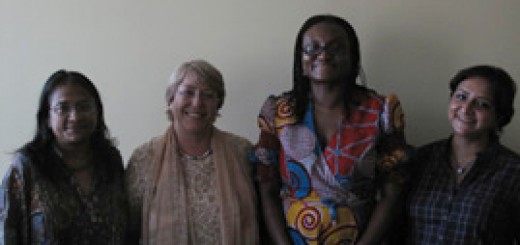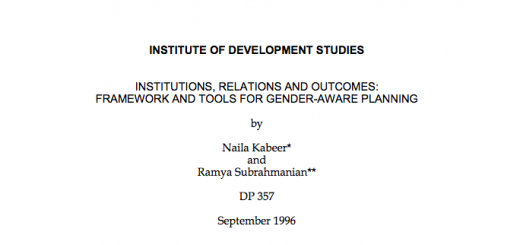‘The Structure of “Revealed Preference”: Gender, Race and Community in the London Garment Industry’, Development and Change.
 This article takes as its starting point the overwhelming concentration of Bangladeshi women in the homeworking sector of the clothing industry in London. This pattern forms a contrast to the large numbers of male Bangladeshi workers also concentrated in the garment industry but who are to be found mainly in the factories and sweatshops. The article uses the accounts given by the Bangladeshi homeworkers themselves for their concentration in this form of work to explore different theoretical explanations of female labour supply behaviour, focusing in particular on questions of choice and constraint, culture and economy.
This article takes as its starting point the overwhelming concentration of Bangladeshi women in the homeworking sector of the clothing industry in London. This pattern forms a contrast to the large numbers of male Bangladeshi workers also concentrated in the garment industry but who are to be found mainly in the factories and sweatshops. The article uses the accounts given by the Bangladeshi homeworkers themselves for their concentration in this form of work to explore different theoretical explanations of female labour supply behaviour, focusing in particular on questions of choice and constraint, culture and economy.
The study suggests that the ‘preferences’ revealed by the labour market behaviour of Bangladeshi women cannot be attributed solely to them, but must be seen in terms of bargaining and negotiation with other, more powerful members of the family. Furthermore, the intra-household decision-making process is itself embedded within a broader institutional environment which determines the access enjoyed by different groups to socially-valued resources. For Bangladeshis, a key factor in this broader environment is the operation of racially-based forms of exclusion from the mainstream opportunities. Consequently, community solidarity and networks represent important symbolic and material resources for members. However, these resources are distributed in highly gender-specific ways, with very clear implications for women’s place within the community. The article argues therefore that any attempt to explain Bangladeshi women’s concentration in homework has to move beyond a focus on either individual circumstances or cultural norms to an exploration of the interaction of racism, community identity and gender relations in shaping women’s labour market options.



